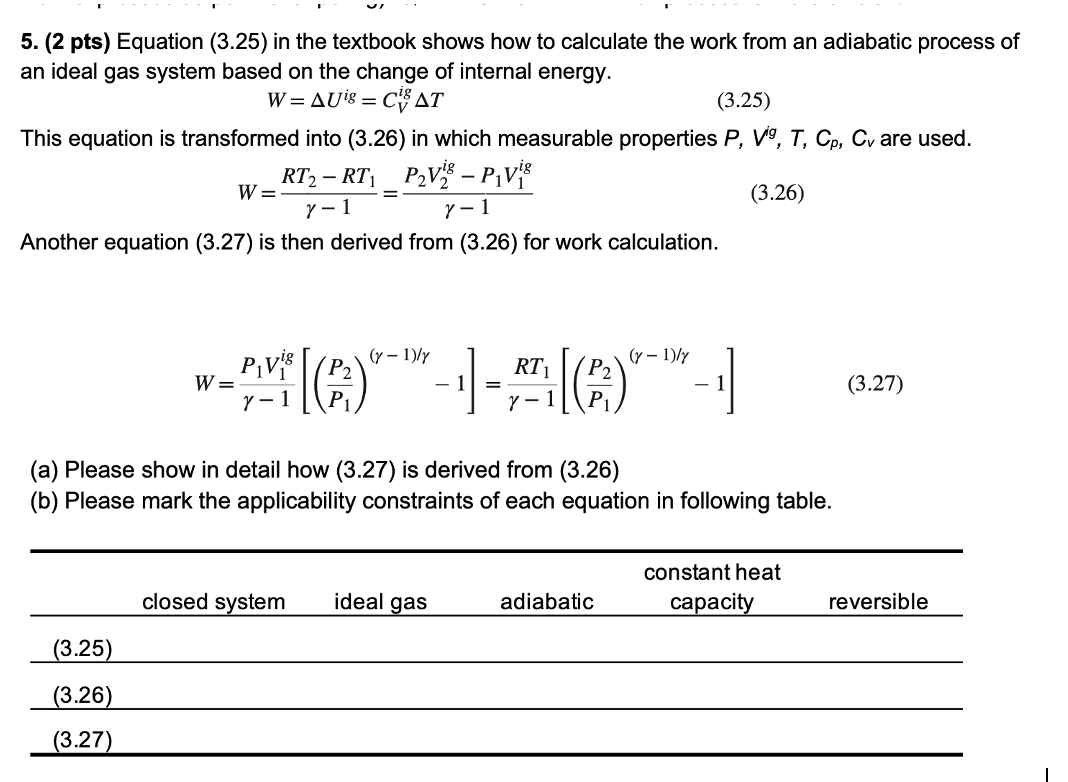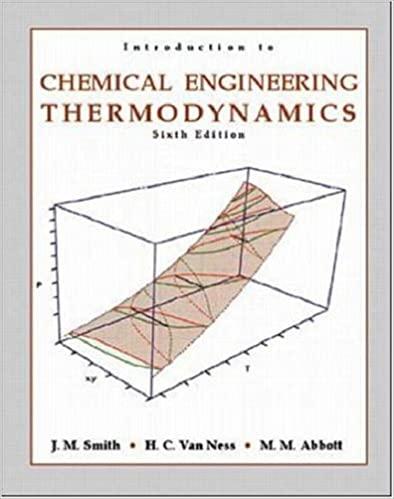Answered step by step
Verified Expert Solution
Question
1 Approved Answer
(2 pts) Equation (3.25) in the textbook shows how to calculate the work from an adiabatic process of an ideal gas system based on the
(2 pts) Equation (3.25) in the textbook shows how to calculate the work from an adiabatic process of\ an ideal gas system based on the change of internal energy.\
W=\\\\Delta U^(ig)=C_(V)^(ig)\\\\Delta T\ This equation is transformed into (3.26) in which measurable properties
P,V^(g),T,C_(p),C_(v)are used.\
W=(RT_(2)-RT_(1))/(\\\\gamma -1)=(P_(2)V_(2)^(ig)-P_(1)V_(1)^(ig))/(\\\\gamma -1)\ Another equation (3.27) is then derived from (3.26) for work calculation.\
W=(P_(1)V_(1)^(ig))/(\\\\gamma -1)[((P_(2))/(P_(1)))^((\\\\gamma -1)/(\\\\gamma ))-1]=(RT_(1))/(\\\\gamma -1)[((P_(2))/(P_(1)))^((\\\\gamma -1)/(\\\\gamma ))-1]\ (a) Please show in detail how (3.27) is derived from (3.26)\ (b) Please mark the applicability constraints of each equation in following table.

Step by Step Solution
There are 3 Steps involved in it
Step: 1

Get Instant Access to Expert-Tailored Solutions
See step-by-step solutions with expert insights and AI powered tools for academic success
Step: 2

Step: 3

Ace Your Homework with AI
Get the answers you need in no time with our AI-driven, step-by-step assistance
Get Started


